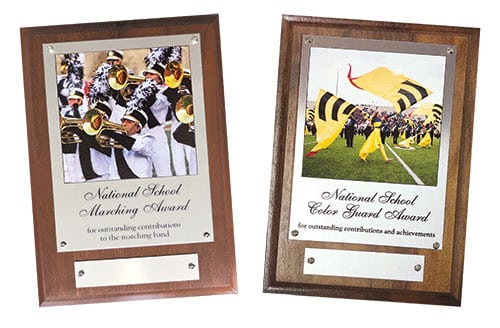In any rehearsal, a primary goal should be to create as many moments of beauty as possible. Beauty occurs when everyone is fully engaged, actively listening, and working together to achieve a collaborative musical vision.
Because a rehearsal is an environment of rapid feedback, the psychological atmosphere can be in constant flux. Conductors should strive to make the music, rather than the technique, the impetus of feedback. As the great Carlos Kleiber said while rehearsing the overture to Die Fledermaus with the Stuttgart Radio Symphony Orchestra: “It’s very difficult to say: let’s take care of the technique and then we play with expression. Because, strangely, the technique is the expression. If the technique is there but without expressiveness, it is nothing.” The best way to give students a listening model is to highlight who is doing it right. Listening students gain a model, and demonstrating students feel more confident in their musicmaking.
General Listening Concepts
Using guided listening techniques in rehearsal transfers responsibility to students, forcing them to become more independent and self-sufficient. Alhough it may be tempting, conductors should avoid telling players to watch. Instead, tell them to listen and more specifically, who to listen to. It is not only acceptable but recommended to do repetitions where the director does not conduct at all. It can be surprising to observe how well students function on their own. In his book, The Compleat Conductor, Gunther Schuller highlighted seven areas of musical hearing: pitch/intonation, harmony, rhythm/articulation, balance/orchestration, color, dynamics, and line/continuity. Try to incorporate all seven in every rehearsal. These areas also influence conducting.
How Great Ensembles Play Together
When a world-class orchestra like the Berlin Philharmonic performs, several habits become apparent. Players breathe together, often moving together as well. They watch each other just as much or more than they watch the conductor. Think of ways to recreate these situations in rehearsals. One such idea is to have the ensemble members close their eyes, and using a pre-determined pitch, ask them to take an audible breath and sing the note together. It may sound ragged on the first try, but soon more assertive members of the group will lead, and the note is together, often within three or four repetitions. This process can then be applied – with the conductor’s guidance – to specific rehearsal situations.
Conductor’s Role in This Process
To facilitate guided listening, directors should ask players more questions instead of giving them easy answers. The goal is for students to demonstrate their knowledge. Let them show that they understand. In too many rehearsals, the conductor is the only musical authority, and players have no autonomy in the process. The result may end up being excellent, but students are treated as pawns on a chessboard instead of collaborators with informed musical ideas. The following guided listening strategies utilize the seven areas of musical hearing.
Harmony
Even at the earliest levels of ensemble musicianship, directors can discuss how a triad is constructed and how harmony determines musical form. Without using the term cadence, ask students, “does this sound like the music could end here, or does it need to go on?” When learning triads, have the ensemble sing their pitches while explaining what the root, third, and fifth are. Alternatively, the director can sing the root without saying the note name and have all of the students who have that note play it back. This engages their listening development in a different way. Point out consonances and dissonances and use these to discuss musical inflection. It is helpful to relate it to speech and how people emphasize certain words. Be creative with relatable examples.
Dynamics
Dynamics are always relative to the specific piece, the composer, and the texture. Enforce this idea by asking “Does it sound like many people are playing here? What do you need to do to your volume?” Devise etudes to reinforce dynamics. Another exercise is to have students play a crescendo and diminuendo on a single pitch or chord, and then try it again, asking certain individuals or sections to lead the dynamic shape. Dynamics and balance are often intertwined, so this prepares them for assigned roles in the ensemble’s balance.
Balance/Orchestration
A great deal of music-making is knowing who has the melody and making sure they can be heard easily. To that end, ask students, “Who thinks they have melody here? Okay, go ahead and play it.” Then guide them through the music, evaluating their opinions instead of doing the work for them. Another possibility is to say, “here is what the trumpets have” in lieu of “listen to the trumpets here”. Balance is always about context. This can relate to speech again – is this an intimate conversation, a small group of friends, or a soapbox moment for an audience?
Color/Timbre
In a situation where melody is shared by two different instruments such as flute and clarinet, try the following exercise. Have the students play with equal partnership, then with the flute leading, and then with the clarinet leading. Ask them to comment on the difference. This is color. Try to avoid using abstract terms like dark and bright to describe sound. Discuss sound in terms of resonance and overtones and demonstrate examples for the students.
If appropriate for the instrument, students should understand the concept of vibrato. This includes how fast it should be, where it applies, and how it relates to singing. If a non-vibrato instrument plays with one that traditionally uses it, weigh the musical context before deciding. In rehearsal, using singing and speech as aural aids helps students understand color. Finally, use verbal imagery and other relatable analogies to create links between concepts students already understand and what you want them to be able to hear.
Rhythm/Articulation
Precision comes from matching rhythms and articulations. Sizzling rhythms is a great method for students to get real-time feedback by simply using their ears. The conductor should ask guiding questions rather than telling students what to do. It sometimes helps to create an external source of pulse from within the ensemble – students counting the pulse or a snare drummer playing eighth notes. This forces them to listen to a constant – but still living – pulse rather than a metronome. Emphasize the players who are doing it right by having groups play and asking questions in rehearsal. Instead of constantly giving an ensemble a diagnosis, directors should occasionally give them a chance to participate in their own recovery. Similarly, draw attention to the lines that generate the pulse. Better ensemble rhythm and tempo come from disciplined listening and awareness in rehearsal.
Pitch/Intonation
Tune from within the ensemble whenever possible – such as tuba foundation, oboe or clarinet. Building from this foundation, Richard Floyd reminds musicians to tune their trio by listening to players on either side of them. This creates links around the entire ensemble and begins the process of listening more globally. When encountering intonation issues, have students listen for waves and ask questions about pitch. Sing often and have students sing without you in rehearsal. If students can sing in tune, they can play in tune. Putting complacency and ego to the side are essential. Musicians should assume they are wrong and make adjustments. Educators have a responsibility to inspire this process of adjustment in students.
Line/Continuity
Emphasize playing through the notes. Many young players (and teachers) only worry about note beginnings and endings. Notes need body to sustain musical energy. I think of music as a living, breathing entity so I sometimes talk about connections between musical moments being like tendons, arteries, and ligaments. Think about lines in terms of vocal inflection and ask students which notes need more weight. This weight provides a destination, and the line is either the journey away from or towards each destination. Have students listen for contour (something even beginners can do) and discuss shape from there. Finally, try to relate the individual line to the architectural whole. This creates cohesion and promotes an organic flow to the music rather than a performance full of manufactured moments. Each line becomes a tributary of the river of the musical whole.
Seating/Setup
In addition to the methods discussed above, directors can help students listen in diverse ways by experimenting with different setups. Some possibilities include letting everyone pick a random spot in the ensemble setup, using concentric circles of brass and woodwinds facing inwards, putting percussion in the center or front of the group, and facing the brass and woodwinds towards each other with conductor in the center.
Also, consider a specific setup for each piece on the program. There may be lines or passages in the piece where a change in setup will put the musicians in a better position to succeed. While routine is important and you do not want to create chaos by doing something like this every week, experimenting with layout and rehearsal techniques keeps students engaged and listening.
Ultimately, the goal of music educators is to create self-sufficient musicians. Transferring responsibility to students and giving them an active role in rehearsal helps them to be creative, engage their listening skills, and collaborate with each other. This newfound autonomy fosters confidence, independence, and trust. Without mutual trust and an atmosphere where mistakes are looked at as a way to learn, teachers cannot expect students to take risks. The best and most fulfilling music-making happens when everyone can take chances freely and has a stake in the outcome.






